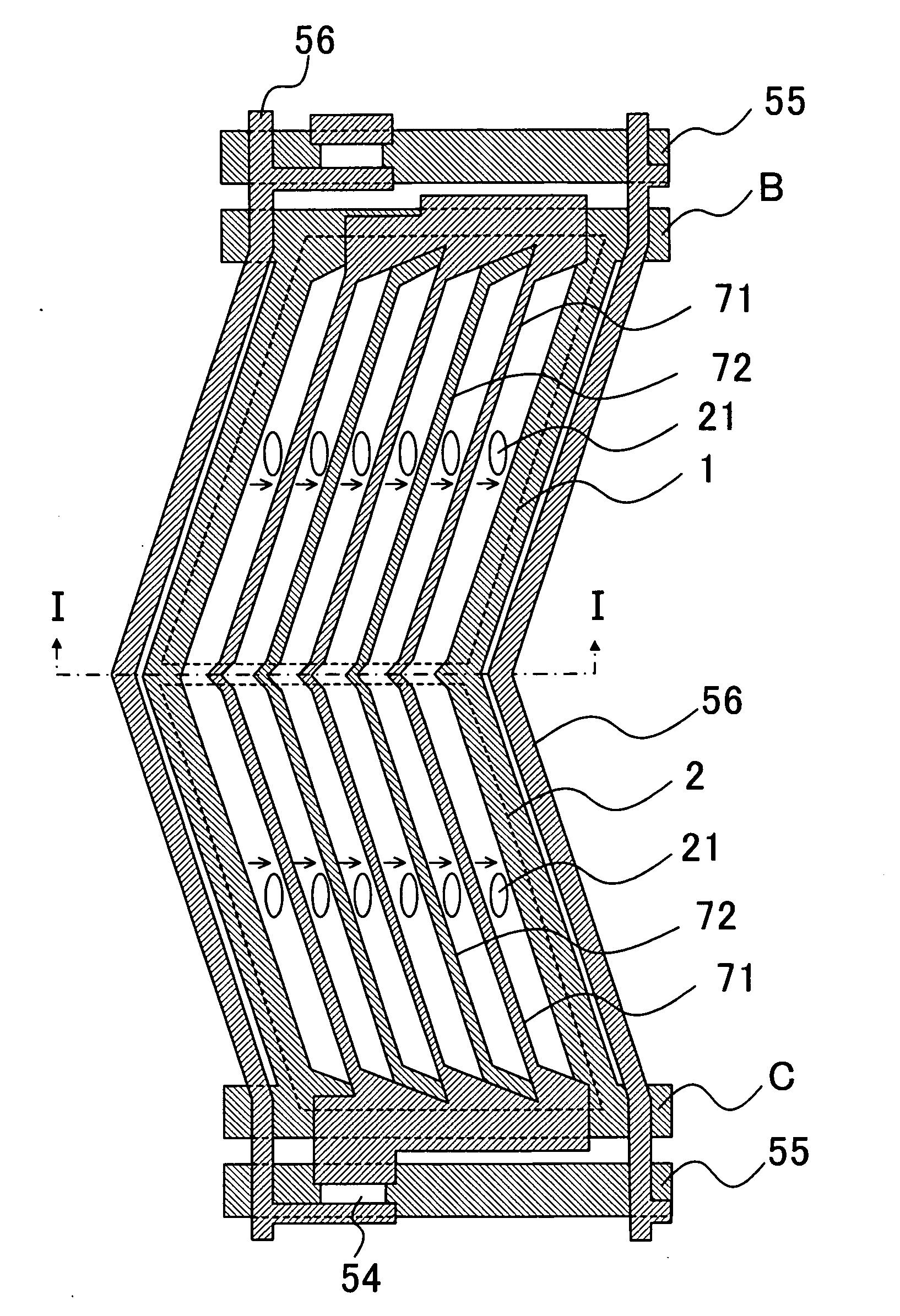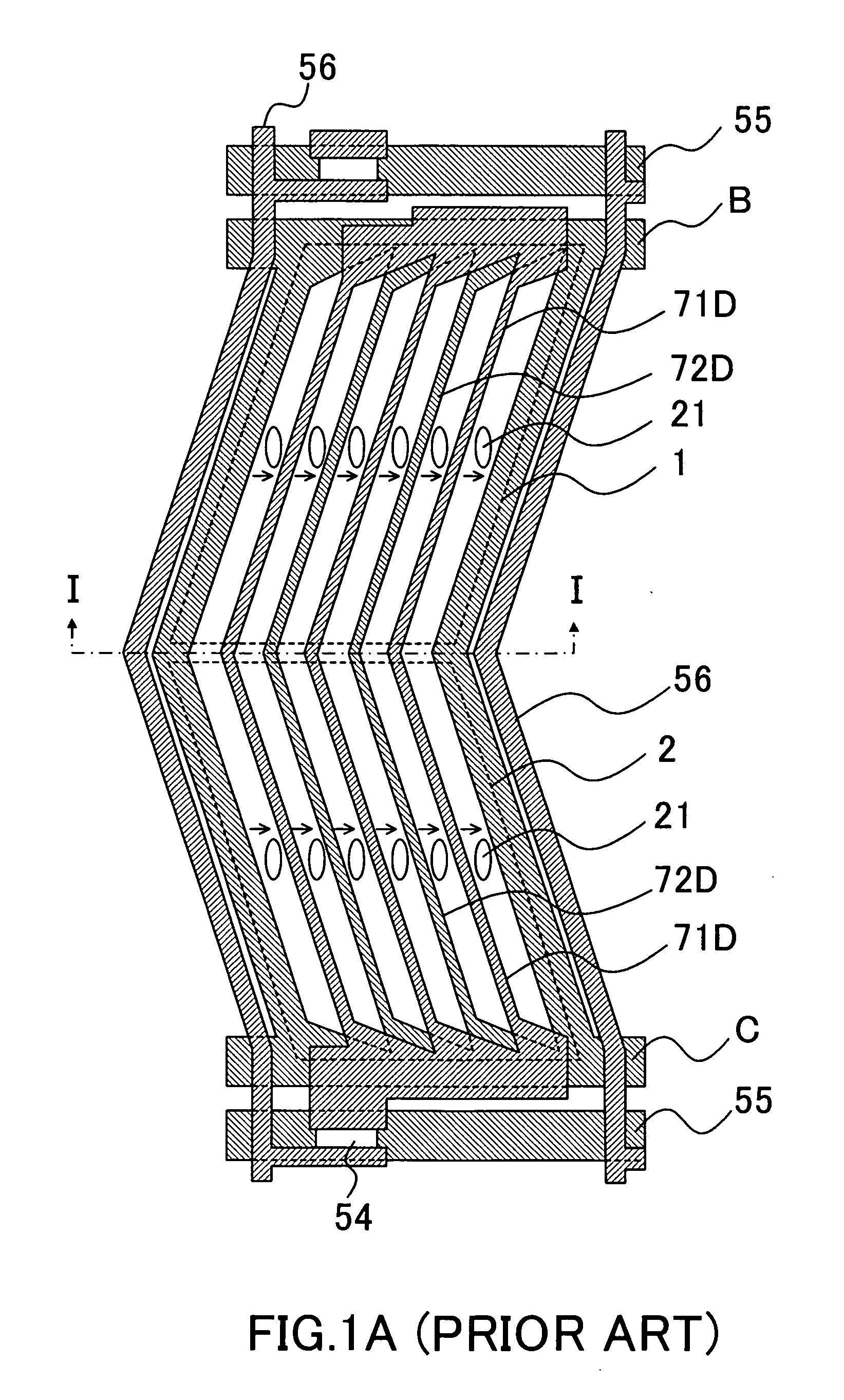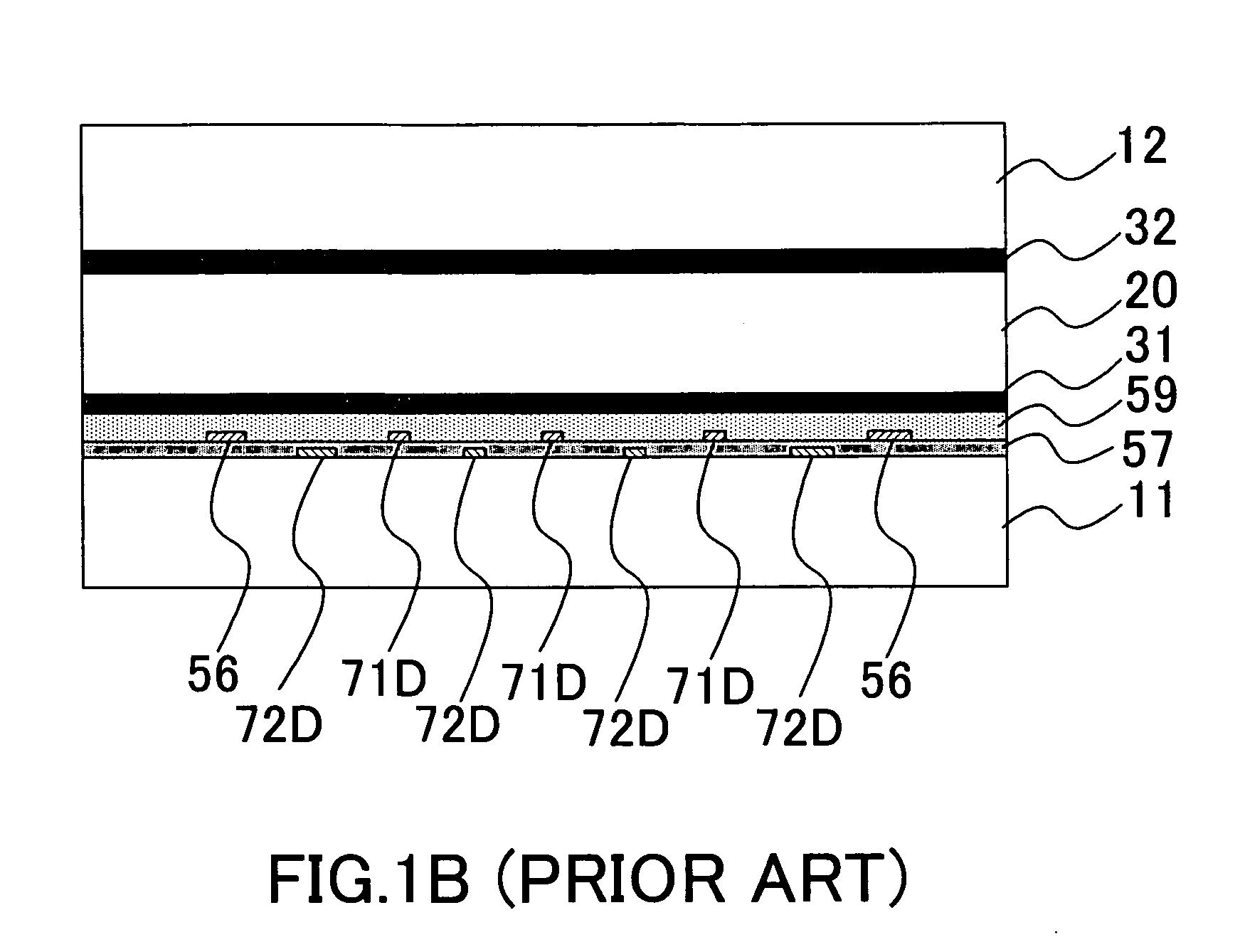Liquid crystal driving electrode, liquid crystal display device, and manufacturing method thereof
a driving electrode and liquid crystal technology, applied in non-linear optics, instruments, optics, etc., can solve problems such as disturbances in liquid crystal domains, display may become rough or blocky, and above-described ips-lcds of the prior art still have unsolved problems, and achieve uniform and even display, excellent image quality, and low coloring
- Summary
- Abstract
- Description
- Claims
- Application Information
AI Technical Summary
Benefits of technology
Problems solved by technology
Method used
Image
Examples
first example
[0055] A first example of the present invention is similar to the LCD shown in FIG. 5A. As shown in FIG. 5A, this example has the configuration in which the pixel electrodes 71 and the common electrodes 72 have the double V shape at the bent portions thereof. Moreover, the angle defined between the direction of extension of the pixel electrodes 71 or the common electrodes 72 and the initial aligning direction (which is the vertical direction in the drawing) of the liquid crystal is set greater than the angles in other regions in the vicinity of the boundary between the sub regions. To be more precise, the angle defined between the direction of extension of the pixel electrodes 71 or the common electrodes 72 and the initial aligning direction of the liquid crystal is set to 15 degrees in the region mainly used for display, whereas the relevant angle is set to 45 degrees in the vicinity of the boundary between the sub region 1 and the sub region 2. Here, positive type liquid crystal i...
second example
[0079] An LCD according to a second example of the present invention will now be described with reference to FIG. 7. In this example, the number of bending a pixel is set to three times for each pixel as shown in FIG. 7. Therefore, each pixel has four sub regions. Specifically, in this example, a pixel electrode 71A and a common electrode 72A are bent three times. Other features of the LCD except the pixel electrodes 71A and the common electrodes 72A that are bent three times are similar to those in the configuration of the example shown in FIG. 5A.
[0080] In the configuration of this example as well, the turning directions of the liquid crystal molecules are stabilized in the vicinity of the boundary between the sub regions. Therefore, it is possible to perform even and stable display. Note that the LCD shown in FIG. 7 can be manufactured in accordance with a manufacturing method which is similar to the manufacturing method for the LCD shown in FIG. 5A.
third example
[0081]FIG. 8 is a plan view showing a configuration of a liquid crystal display device according to a third example of the present invention. In this example, the number of bending a pixel is set to five times for each pixel. Therefore, each pixel has six sub regions. Specifically, in this example, a pixel electrode 71b and a common electrode 72b are bent five times. Configurations except those of the pixel electrodes 71b and the common electrodes 72b that are bent five times are similar to the configuration of the example shown in FIG. 5A.
[0082] In the configuration of this example as well, the turning directions of the liquid crystal molecules are stabilized in the vicinity of the boundary between the sub regions. Therefore, it is possible to perform even and stable display. Note that the LCD shown in FIG. 8 can be manufactured in accordance with a manufacturing method which is similar to the manufacturing method of the LCD shown in FIG. 5A.
PUM
| Property | Measurement | Unit |
|---|---|---|
| angle | aaaaa | aaaaa |
| angle | aaaaa | aaaaa |
| driving voltage | aaaaa | aaaaa |
Abstract
Description
Claims
Application Information
 Login to View More
Login to View More - R&D
- Intellectual Property
- Life Sciences
- Materials
- Tech Scout
- Unparalleled Data Quality
- Higher Quality Content
- 60% Fewer Hallucinations
Browse by: Latest US Patents, China's latest patents, Technical Efficacy Thesaurus, Application Domain, Technology Topic, Popular Technical Reports.
© 2025 PatSnap. All rights reserved.Legal|Privacy policy|Modern Slavery Act Transparency Statement|Sitemap|About US| Contact US: help@patsnap.com



